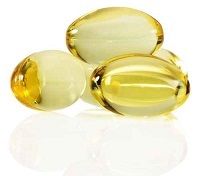Study: Hi-Dose Vitamin D Shows No Benefit for Postmenopausal Women
Postmenopausal women who took high doses of Vitamin D showed no improvement in bone mineral density, muscle function, muscle mass or frequency of falls, Wisconsin researchers found. In a study reported in JAMA Internal Medicine high-dose cholecalciferol therapy increased calcium absorption "but the effect was small and did not translate into beneficial effects," Karen Hansen, MD and colleagues wrote.

Postmenopausal women who took high doses of Vitamin D showed no improvement in bone mineral density, muscle function, muscle mass or frequency of falls, Wisconsin researchers found.
In a study reported in JAMA Internal Medicine high-dose cholecalciferol therapy increased calcium absorption “but the effect was small and did not translate into beneficial effects,” Karen Hansen, MD of the University of Wisconsin School of Medicine and Public Health, Madison, WI, and colleagues wrote.
The authors conducted a randomized, double-blind, placebo-controlled clinical trial at a single center in Madison, Wisconsin, for a three year period ending July 31, 2013.
Their ultimate research goal was to see if increasing women’s vitamin D levels would reduce osteoporosis and osteoporotic fractures.
The participants were mean age 61, mostly white, and mostly overweight with a mean BMI of 30.8.
There were 230 participants, of whom 76 got placebo, 75 got low-dose cholecalciferol, and 79 got high-dose cholecalciferol.
The results showed “calcium absorption increased 1% in the high-dose arm, but decreased 2% in the low-dose arm,” and decreased 1.3% in the placebo group.
There were no differences in the three groups changes in spine, mean total-hip, mean femoral neck, or total-body mineral density. There were also no differences in fitness as measured by standard tests, the numbers of participants who experienced falls during the study period, physical activity levels, or functional status.
“Study results do not justify the common and frequently touted practice of administering high-dose cholecalciferol to older adults to maintain serum 25 (OH) D levels of 30 ng/mL or greater,” the team concluded, “Rather, study results support the Institute of Medicine’s conclusion that vitamin D repletion is a serum 25(OH)D level of 20 ng/mL or greater.”